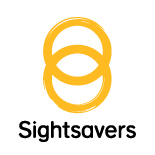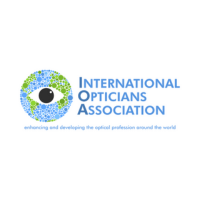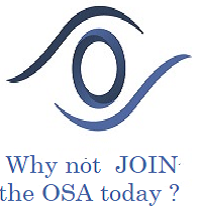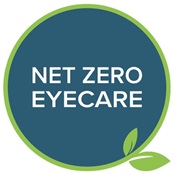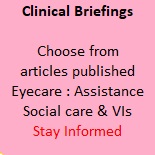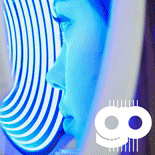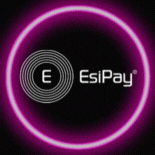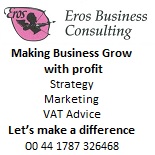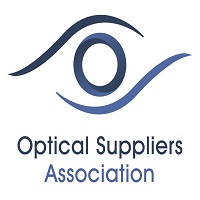New products and Services
Innovative child myopia management lenses from Shamir
Shamir launches innovative child myopia management lenses that slow axial length progression and enhance kids’ overall wellbeing
 Shamir Optimee™, clinically proven to slow axial length progression in myopic children, introduces a new, holistic approach to child myopia management that considers children’s full experience of wearing glasses and their wellbeing needs. Designed with Shamir Focusflow™ next-generation defocus technology, the new lenses safeguard children’s eyesight and enable a natural appearance while wearing glasses, while supporting natural posture, comfort, confidence, and wellbeing.
Shamir Optimee™, clinically proven to slow axial length progression in myopic children, introduces a new, holistic approach to child myopia management that considers children’s full experience of wearing glasses and their wellbeing needs. Designed with Shamir Focusflow™ next-generation defocus technology, the new lenses safeguard children’s eyesight and enable a natural appearance while wearing glasses, while supporting natural posture, comfort, confidence, and wellbeing.
 Shamir Optical Industry, a world-leading developer of optical lenses and part of the EssilorLuxottica group, is launching a breakthrough, holistic solution for managing child myopia. Shamir Optimee™ lenses are clinically proven to manage myopia progression, helping preserve children’s eyesight as they grow toward adulthood. Going far beyond correcting vision and managing myopia, these innovative lenses also support natural posture and help children feel more comfortable, natural-looking and confident when wearing glasses, improving their overall wellbeing.
Shamir Optical Industry, a world-leading developer of optical lenses and part of the EssilorLuxottica group, is launching a breakthrough, holistic solution for managing child myopia. Shamir Optimee™ lenses are clinically proven to manage myopia progression, helping preserve children’s eyesight as they grow toward adulthood. Going far beyond correcting vision and managing myopia, these innovative lenses also support natural posture and help children feel more comfortable, natural-looking and confident when wearing glasses, improving their overall wellbeing.
Addressing a growing need
Myopia is a growing concern. It is estimated that worldwide myopia now affects around 1 in 3 people, predicted to rise to more than 1 in 2 by 20501. Child myopia is usually identified at age 610, the years when it progresses relatively quickly. The progression continues until around age 1518, at a slower pace. Early management is critical to preserving vision and reducing the likelihood of high myopia, which is associated with a high risk of eye diseases in adulthood.
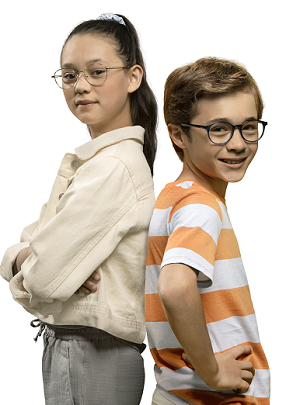
Recognising the huge and growing need for effective child myopia management, Shamir prioritised it as the first development project in its new Shamir Child-care product portfolio. It started by looking at children holistically to understand their needs and experiences and how they feel about wearing glasses in various aspects of their daily lives – learning, playing, socialising, relaxing, and using digital devices, a major factor for today’s “digital generation”. The Shamir team joined forces with field experts to review the extensive research done into the psychological and ergonomic aspects of child development, vision correction, and myopia management.
American clinical psychologist Monica Shahbaznia Alvarez, PhD, who specialises in both Family & Child Psychology and Pediatric Psychology, said: “When designing spectacle lenses for myopic children and adolescents, it is necessary to address the emotional challenges they face and to understand the impact on their self-image and self-esteem in the context of feeling a sense of normalcy and belonging throughout their life. Children who wear spectacles with standard myopia lenses may experience lower self-confidence, which in turn may affect their participation in social groups and sports. Those glasses may also affect their physical comfort and their appearance, particularly if they have thick edges and create a distorted view of the child’s face, which can become a trigger for taunting or bullying.”
Orit Shenkar, PhD, OT, an Israeli Occupational Therapist and Ergonomics Expert, commented: “Vision involves more than our eyes. Children tend to develop a variety of head and eye declination combinations for varied near-vision tasks, and many studies document evidence of the damaging effects of habitual high neck flexion and repetitive postural habits. Poor postural habits may affect a child’s attention level and performance, with far-reaching effects on the musculoskeletal system and many aspects of general health. Because children’s bones and muscles are still developing, how they habitually position their body is important for their future healthy development.”
Holistic approach – efficacy, safety, aesthetics, ergonomics
The insights gained from its deep research led Shamir to develop a unique holistic approach that corrects myopia and slows axial length progression while providing aesthetic, ergonomic, and safety benefits, so that children can enjoy all their regular activities with freedom and confidence. Shamir Optimee™ integrates Shamir Focusflow™ next-generation defocus technology, which provides a clear central vertical zone with the child’s prescription. Called the Central Vertical Canal, this clear area allows flexible eye movement so children can focus on near-vision activities and at all distances without over-flexing their neck. This unique non-concentric lens design results in significantly thinner edges than in regular myopia lenses. It dramatically reduces the “cut-in” effect – the distorted face contour seen when looking at the child or a selfie, which occurs with standard myopia SV lenses. Manufactured using FreeForm™ technology, Shamir Optimee is perfectly transparent. Together, these innovations enable children to look and feel more natural. Made with Shamir Metaform™, the lenses are up to 18 times stronger than the FDA standard requirement2, enabling children to safely wear their glasses even during rough outdoor play.
Proven efficacy
A clinical trial is running in Israel, led by Prof. Yair Morad, comparing the progression of myopia and axial elongation with Shamir Optimee™ vs SV lenses in 126 children aged 6-13. The first-year major result shows that the axial elongation in children below 10 was slowed by 43% on average. Axial elongation is the most objective measurement of myopia progression in addition to Rx progression. The same trial showed that 1 of 3 young children experienced natural eye growth, as if non-myopic. When both parents were myopic, the Rx progression was 45% slower on average. As for compliance, children wore Shamir Optimee™ glasses for an average of 14 hours a day, just like SV, indicating they felt comfortable wearing the lenses. The trial results were published in the American Journal of Ophthalmology.3
Shamir Optimee™ myopia management lenses are intended for children, following the recommendation of an ophthalmologist or ECP, according to the specific country’s rules. They are available in a wide variety of indexes between 1.50 and 1.74, Rx range +0.5[D] to -10[D]. They can be clear or Transitions (green and grey).
Focusing on improving quality of life
Mr. Yagen Moshe, Shamir’s CEO, said: “The holistic approach behind Shamir Optimee reflects the wide view that we take with the goal of improving the quality of life of our customers, kids and adults. Beyond considering vision correction needs, we look through consumers’ eyes at how they experience their daily activities. We also conduct extensive research and then apply the most advanced technologies to provide high-performance optical lens solutions for a variety of needs. In the case of these new lenses for children, we also took parents’ needs and concerns into consideration. The launch of Shamir Optimee is an exciting step for Shamir. It continues our long legacy of developing innovative, high-performance lenses and establishes a new child-care category range, in which we focus on safeguarding the eyesight and wellbeing of children, supporting their safety, comfort, confidence, and sharp vision, now and in the future.”
- Holden et al, “Global prevalence of myopia and high myopia and temporal trends from 2000 through 2050″, Ophthalmology Volume 123, May 2016.
- “Shamir Optical Industry Ltd. Metaform™ lenses were tested by an independent external lab, COLTS™ Laboratories. The lab tested dozens of Metaform™ lenses and the results show that Metaform™ lenses are up to 18 times stronger than the FDA standard requirement. For the full reports please contact your local Shamir team”
- Yuval C, Otzem C, Laura BS, Shirel R, Dana GN, Atalia W, Noam B, Nir E, Yair M. Evaluating the Effect of a Myopia Control Spectacle Lens Among Children in Israel: 12-Month Results. Am J Ophthalmol. 2023 Sep 9;257:103-112. doi:








